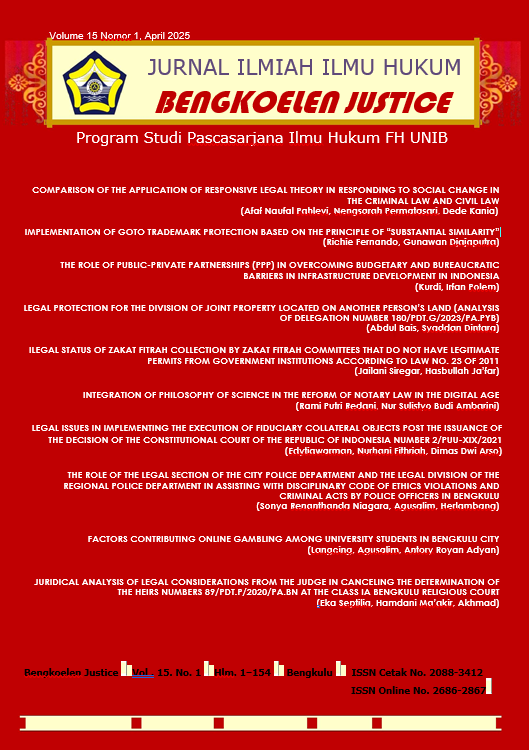Main Article Content
Abstract
Based on the principles of land law in Indonesia which adheres to the principle of horizontal separation,this allows for differences in ownership of landand buildings and plant sonit.So it should be mutually understood that the landowner cannot automatically control the rights to the building or plants located on it. It turns out that not everyone understands this kind of legal principle,and in practice,disputes over joint property often occur. This kind of dispute also occurred between two people who were previously a husband and wife with the plaintiff (Nilda Yanti Binti Ardansyah) and the defendant (Nasrun Bin Sahril), As for the case that the Plaintiff disputed the joint property which was on land belonging to the Defendant's parents, this case arose when the Defendant did not share the proceeds of the joint property with the Plaintiff. For this reason, the researcher took this caseto beexamined in depthso that the Defendantwould sharethe proceeds of the joint assets withthe Plaintiff. What is formulatedin thisresearch is how to protect the Plaintiff's rights so that he can enjoy the proceeds of the joint assets? The research method used is a type of normative juridical research where a law is conceptualized the same as that stated in statutory regulations (law in books). This research approach is a statutory approach. Meanwhile, the legal material includes primary sources, namely national legal rules which are ordered based on a hierarchy starting from the 1945 Constitution, Laws, Government Regulations, and other rules underthelaw.In the provisions that have been regulated in the Marriage Law No. 1 of 1974, namely regarding joint property in marriage which is contained in Chapter VII which is regulated in 3 articles, namely Article 35, Article 36, Article 37. Article 35 paragraph (1) states that property obtained during marriage becomes joint property. And paragraph (2) states that property brought bye ach husband and wife and property obtained byeach as a gift or in heritanceis under the control of each as long as the parties do not determine other wise. And secondary sources are those found from text books,journals,opinions of figures and scholars related to joint property cases in the case studied. The results of this research show that there is indeed joint property,and the defendant was found notto share the proceeds witht heplaintiff,so that atrial from the Religious Court was needed.
Keywords: Division, Ownership, Principle of Horizontal Separation.
Article Details
Copyright (c) 2025 Abdul Bais, Syaddan Diantara

This work is licensed under a Creative Commons Attribution-ShareAlike 4.0 International License.

Ciptaan disebarluaskan di bawah Lisensi Creative Commons Atribusi-BerbagiSerupa 4.0 Internasional.
